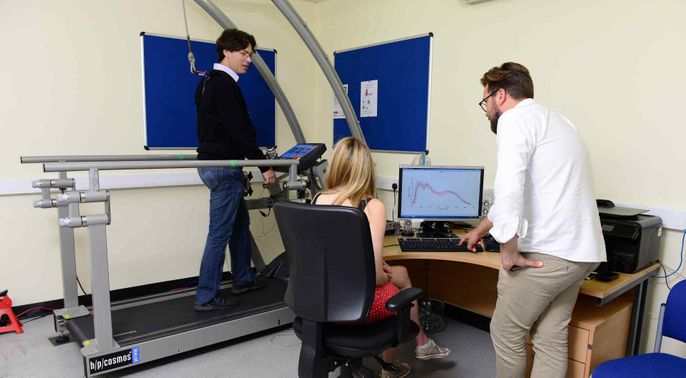Gait Analysis
How to measure the benefit/outcome of an orthopaedic intervention is an often asked question, but at present researchers rely largely upon patient questionnaires, despite their inherent subjectivity. Our primary intention is to develop a tool to help us analyze function and malfunction of the hip and knee joint. The information produced from this tool will assist to compare surgical interventions, to assess functional outcome and to assess rehabilitation, all with regards to hip and knee disease. We hope to understand and demonstrate the role of gait analysis in early joint malfunction to patient prognosis following hip/knee surgery.
Our research ranges from looking at gait motion, joint sound assessment, muscle activity and three-dimensional analysis.
Current trials

Gait Analysis Using an Instrumented Treadmill
REC REF: 10/H0807/101
Study objective
To develop a gait test on an instrumented treadmill that reliably describes the safe limits and symmetry of function of patients with hip and knee disease.
Overview
This is a multicenter study with the aim to develop an assessment protocol that will be universal, objective and practical, using a modified instrumented treadmill that utilizes force plates beneath its belt to assess up to 25 parameters of one’s gait. Parameters, which will be closely looked at include velocity, stride length, % stride length to height, heel strike and toe-off ground reaction forces.
Patient Information Sheet: Instrumented Treadmill for Gait Analysis (PDF)

3D and 2D Motion Capture Gait Analysis of Lower Limbs
REC REF: 14/SC/1243
Study objective
To identify the gait parameters affected by pelvic and lower limb surgery, in an effort to develop a mechanism for identifying disease, and understand the impact of surgical intervention on these parameters.
Overview
The main purpose of this study is to assess the use of three-dimensional gait analysis to measure the success (or otherwise) of lower limb surgery i.e. surgery involving the pelvis, hip, knee, foot and ankle. Three-dimensional analysis of gait to obtain kinetic (motion) and kinematic (motion of joint) measurements offers an alternative, objective measure of patient outcome following surgery.
Patient Information Sheet: 3D and 2D Motion Capture Gait Analysis of Lower Limb Orthopaedic Patients (PDF)


